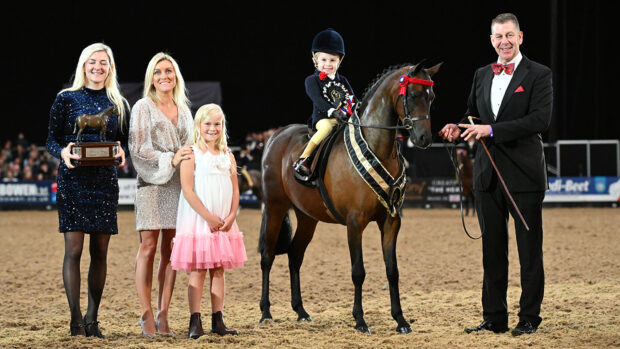With the easing of lockdown upon us, and competitions planned to start up in the UK very soon, it’s always fascinating to hear a judge’s opinion on what they’d like to see from riders in the arena. For List 1 British Dressage judge Richard Baldwin, one factor that always pleases him when judging a test at any level is harmony between horse and rider.
“We are doing this because we love our horses and we love training them, and when I see a harmonious picture, it doesn’t matter if it is the biggest moving horse in the class, or the smallest, it’s appealing to me because of the harmony. Seeing a horse working happily with his rider and working in one partnership together is what brings me to the higher marks, and what makes me enjoy judging,” he explained, on episode 42 of The Horse & Hound Podcast, currently supported by NAF.
Since becoming a dressage judge 15 years ago, Richard says he has witnessed some notable changes in the sport.
“There’s been a real change of trend over the years; we went from having lots of nice, well-trained, quite average horses getting to grand prix several years ago, then we came to a stage where we started to slightly obsess over the getting more and more movement, more elasticity and uphill tendency, and we lost our way a little when it came to harmony and submission.
“I think this is the essence of our sport, and it’s what we should be encouraging – a sense of harmony between horse and rider and a love for what we do.”
Richard also reveals one of the things that can be most frustrating for a dressage judge to see in the arena.
“Riders concentrate a lot on developing the way of going of the horse, and when we go to our trainers we spend a lot of time working on the horse and the paces, but many people actually don’t take the time to understand the tests they are riding, and where the movements actually begin and end,” he says. “It means people are throwing away silly marks through poor test riding.
“Charlotte Dujardin has many amazing attributes but one thing she always does very well is that she knows where the start, middle and end of every movement needs to be, and she is accurate with her riding.
Article continues below…
You might also be interested in:

8 training gems from Carl Hester that could transform your dressage scores

The Horse & Hound Podcast 42: Dressage judge Richard Baldwin | Pulling and plaiting | News round-up

How to stop your horse rushing — and other training gems from Laura Tomlinson
Olympic gold medallist Laura Tomlinson shares some invaluable training tips and tricks to incorporate into your own schooling
“It can be frustrating for a judge to see a horse and rider in beautiful harmony, with the horse elastic, relaxed, athletic, and you want to give the higher points, but you are having to deduct marks or half marks here and there because maybe the circle is not quite in the right place or something else isn’t accurate,” Richard adds.
“Take an entry for example – you could have a beautiful canter and halt, with the rider working wonderfully to create points from the movements, but they don’t actually halt at X. I have to take marks off for that and as a judge I feel sad, because I want to appreciate the training and the harmony in front of me.”
Horse & Hound magazine, out every Thursday, is packed with all the latest news and reports, as well as interviews, specials, nostalgia, vet and training advice. Find how you can enjoy the magazine delivered to your door every week, plus options to upgrade to access our H&H Plus online service which brings you breaking news as it happens as well as other benefits.




